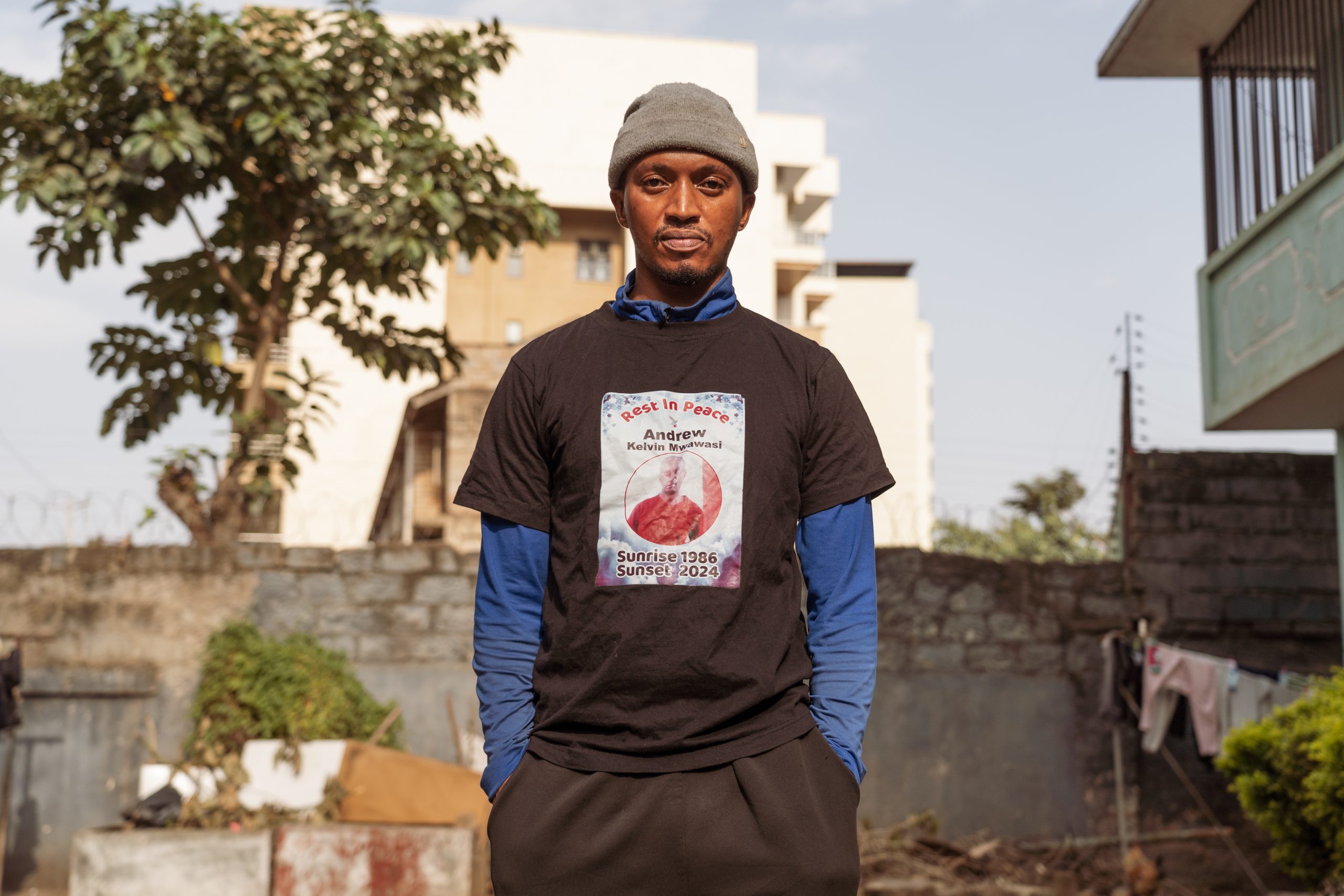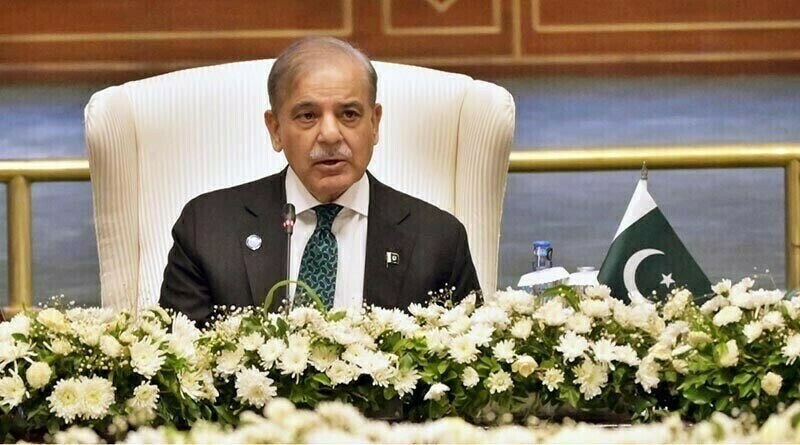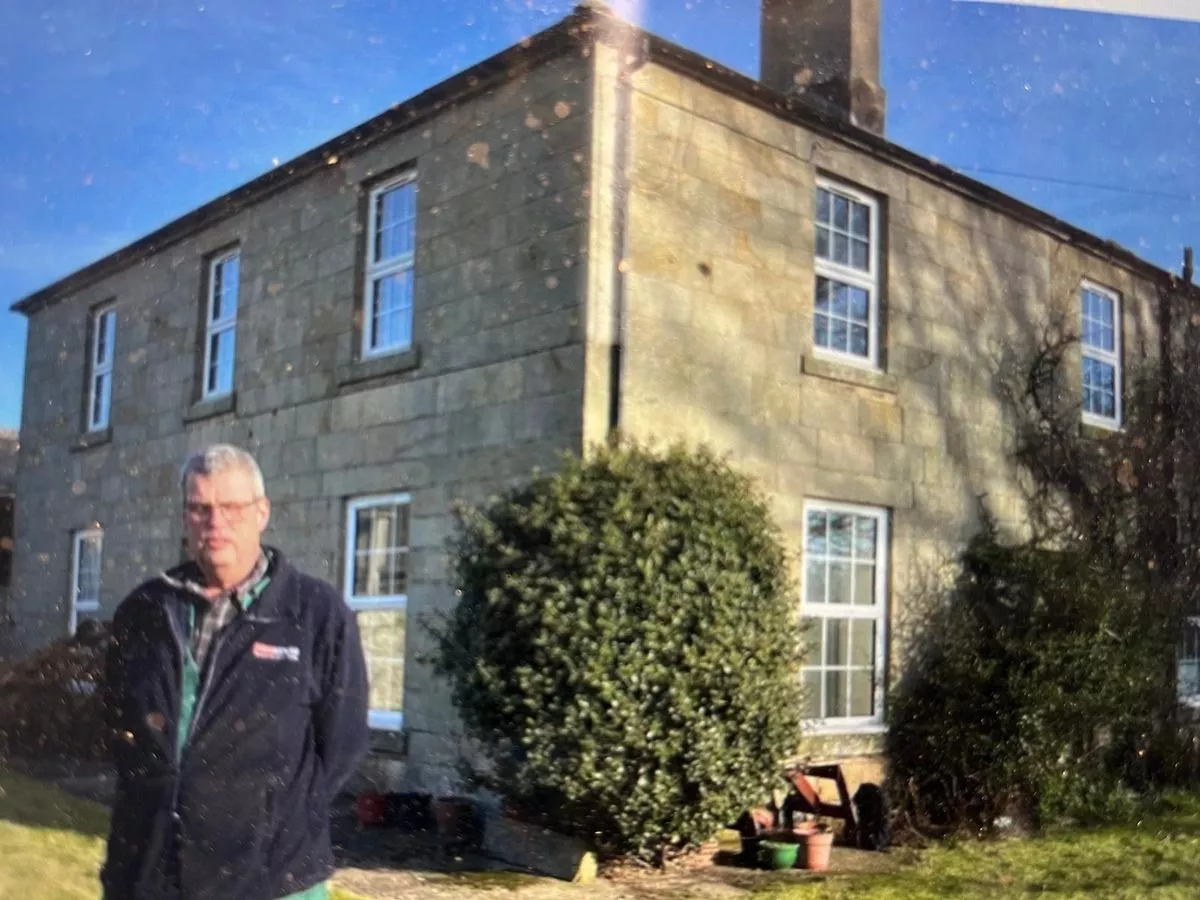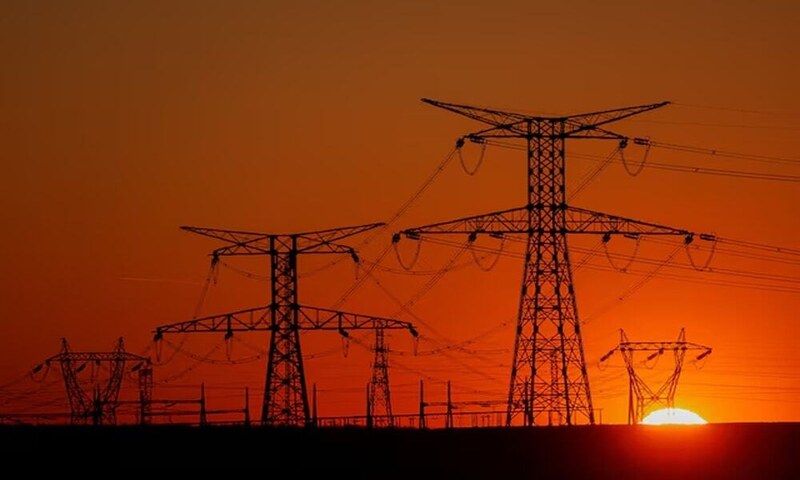By Jaclynn Ashly
Copyright therealnews

Republish this articleThis work is licensed under a Creative Commons Attribution-NoDerivatives 4.0 International License.
We encourage republication of our original content. Please copy the HTML code in the textbox below, preserving the attribution and link to the article’s original location, and only make minor cosmetic edits to the content on your site.Deadly Orders: How Kenya’s government turned on its youth
by Jaclynn Ashly, The Real News Network September 22, 2025
Deadly Orders: How Kenya’s government turned on its youth
by Jaclynn Ashly, The Real News Network September 22, 2025
On June 25, Tom Mwadime Mzungu took to the streets of Nairobi for the first time, joining thousands of protesters to mark the one-year anniversary of Kenya’s historic Gen Z protests—when the country’s youth shocked the world by rising with hope for a better future.
The day also marked one year since his 36-year-old brother Andrew Kelvin Mwawasi was killed during these protests The brutal crackdown left at least 60 dead.
“I just went alone,” 32-year-old Mwadime recalls, sitting beside his grieving mother at her home in Juja, a town north of Nairobi. “I was carrying so much pain and anger, and I needed to let it out.”
As Mwadime marched forward, the harsh sting of tear gas filled his lungs for the first time, and the looming presence of armed riot police bore down on him. “I just asked God to protect me and walked without fear,” he says, his voice determined.
“I needed to fight for my brother. When the government ignores you, going to the streets is the only way to hold on. Being there that day meant I was finally standing up for him.”
“I needed to fight for my brother. When the government ignores you, going to the streets is the only way to hold on. Being there that day meant I was finally standing up for him.”
Since last year’s protests against a controversial finance bill that would have sharply raised taxes, over 100 demonstrators have been killed and thousands arbitrarily detained or abducted, intensifying public anger at President William Ruto and his administration over state violence, soaring living costs, and corruption. Observers warn the government’s escalating crackdown on protesters, activists, and human rights defenders is unprecedented.
For the families who lost loved ones during the Gen Z uprising more than a year ago, the pain remains raw and justice elusive.
“In Kenya, there’s no justice,” says Mwadime, his eyes red and clouded with tears. “The government wants the world to believe the protesters are criminals and terrorists to justify their murders.”
“The government wants the world to believe the protesters are criminals and terrorists to justify their murders.”
“I’m sick of this system, sick of this government,” he adds, his voice tightening. “Ruto needs to step down. We’ve had enough.”
‘Stop killing kids’
Missing Voices, a coalition of Kenyan human rights groups, documented 104 cases of police killings and 55 enforced disappearances last year—a 450% increase from 2023 and the highest number of disappearances recorded in a single year.
During the one-year anniversary protests, at least 16 people were killed and hundreds injured. On July 7, security forces killed at least 38 people during the annual Saba Saba demonstrations, marking the country’s historic pro-democracy movement. Most of those killed were under 25, including two children. Nearly 1,500 people have been arrested, with hundreds charged with arson or terrorism—a move rights groups warn sets a dangerous precedent under Ruto.
“They need to just stop killing the kids,” whispers 55-year-old Patience Kishaga Gertrude, Mwadime’s mother, through sobs. It has taken her over a year to find the strength to speak publicly about her son, Kelvin, and she struggles to get a single word out. “The government needs to just sit down and talk to them and stop all this killing.”
Patience Kishaga Gertrude holds a photo of her son Kelvin, who was killed in last year’s protests. It has taken her more than a year to find the strength to speak about him. Photo by Jaclynn Ashly.
Kelvin’s younger brother places a memorial poster on a sofa at their mother’s apartment in Juja, north of Nairobi. Photo by Jaclynn Ashly.
Kelvin was killed on the night of June 25 during what became known as the “Githurai massacre,” when security forces opened fire on protesters in Githurai, a neighborhood north of Nairobi. Estimates of the death toll vary, but witnesses claim around a dozen people were killed, while a BBC investigation found no evidence of mass killings.
Kelvin was not part of the protests, his family says, but was heading home from his job when police forces began shooting, causing people to flee. His body was found on the street with a gunshot wound to his head.
By the time the family was informed, police had already moved his body to Nairobi’s city mortuary, where Mwadime was forced to identify the disfigured, swollen body of his eldest brother. Mwadime immediately went to a police station to report the killing, but says he was met with abuse.
“It was so infuriating,” he says. “The officers just shrugged everything off and said my brother was a thug, and it wasn’t the police who shot him.”
“They just kept turning us around, playing with us, and not giving us any clear information,” he continues. “This is what they do until you just give up. They just add more trauma and pain on top of what you’re already feeling.”
The post-mortem concluded Kelvin was killed by a bullet wound to the head, but the bullet exited the back of his head and was not recovered. The family believes Kelvin was severely beaten before being shot close-range. In a morgue photo, his head appears shattered, his eyes and nose bruised and swollen, and dried blood collected under his nostrils.
Families often distrust preliminary investigative processes, since officers themselves secure crime scenes and collect evidence. Activists note that bullets, crucial links between killings and the shooter, are rarely recovered, and cover-ups are common.
“We have to rely on the police to cooperate and provide evidence, yet they are the ones who are doing the killings,” Mwadime says, his voice heavy with frustration.
“We have to rely on the police to cooperate and provide evidence, yet they are the ones who are doing the killings.”
The family reported Kelvin’s murder to the Independent Policing Oversight Authority (IPOA), created to provide civilian oversight of Kenya’s police. But despite repeated follow-ups, the case has made no progress.
“IPOA is just useless,” Mwadime laments. “Unless you attract media attention, no one cares.”
High-profile cases highlight this disparity. Rex Kanyike Masai, one of the first killed in last year’s protests, drew widespread coverage and public outrage, prompting IPOA to launch a detailed investigation. The agency identified Police Constable Isaiah Murangiri Ndumba as the shooter, leading to an ongoing inquest.
Gillian Munyao, mother of Rex Kanyike Masai — among the first killed in last year’s protests — sits with her other son during a court hearing in the ongoing inquest into his murder. Masai is one of the few victims of police killings whose case has led to a detailed investigation. Photo by Jaclynn Ashly.
Similarly, 22-year-old mask vendor Boniface Kariuki was shot point-blank in June during demonstrations sparked by the killing of teacher and blogger Albert Ojwang. Video evidence led to a murder charge against the officer involved, while three officers were also charged in the death of Ojwang.
But such prosecutions are rare. More than a decade after its creation, IPOA has secured only a handful of convictions despite thousands of complaints.
Ernest Cornel, spokesperson for the Kenya Human Rights Commission (KHRC), tells TRNN that IPOA is staffed largely by former police officers, with commissioners appointed by the President and approved by parliament, meaning it “cannot purport to be independent.”
Investigations often advance only when public pressure or media attention is high, not just based on evidence. “Even with overwhelming evidence, IPOA can still fail to act,” Cornel explains. “What matters is how much pressure the public applies.”
Most families who have lost loved ones to police bullets never step into a courtroom. They are left alone to navigate their sorrow, which stretches on without relief.
“We feel lost,” Gertrude says, her words stuttering through weeps. “We feel abandoned and ignored. Even if the government just acknowledged my son’s death, it would help my heart. He didn’t deserve to be killed.”
“Now I’m feeling so much pain and it never gets better,” she continues. “If I see someone who looks like Kelvin, I just start screaming and crying. I’m always breaking down.”
Mwadime says the sight of a police officer sends a jolt through him. “I have this anger in me when I see them,” he says. “I feel like attacking them because any one of them could be the officer who killed my brother.”
From Messiah to Anti-Christ
In 2022, Ruto won Kenya’s presidency by casting himself as the champion of the “hustler nation,” embodied in his United Democratic Alliance (UDA) party’s slogan Kazi ni Kazi (“Work is Work” in Swahili), promoting the dignity of work in the informal economy. A self-described hustler from humble beginnings, he ran on a “bottom-up” platform promising jobs for the youth, small-business loans, and lower living costs.
“I was a big supporter of Ruto,” 49-year-old Caroline Mutisya tells TRNN from her home in Machakos in eastern Kenya. On the wall hangs a memorial poster of her 25-year-old son Ericsson, killed in last year’s protests.
“When he won, I was so excited. I thought he would lift up the mama mbogas [informal female vegetable vendors] and the boda boda [motorcycle taxi] drivers. I truly believed he was going to change Kenya.”
“But now here we are,” Mutisya says with a sigh, her eyes glassy as she scrolls through photos on her phone from June 25. In one image, Ericsson’s bloodied body lies on the street; in another, it has been placed before the gates of parliament, where protesters carried him and laid him down as lawmakers looked on.
Caroline Mutisya shows a photo on her phone of her son Ericsson’s body, laid by protesters at parliament’s gates. Photo by Jaclynn Ashly.
Caroline Mutisya sits in her Machakos home beneath a memorial poster of her son, Ericsson, who she says was killed in “cold blood.” Photo by Jaclynn Ashly.
Once in office, Ruto quickly abandoned his promises. He scrapped subsidies on fuel and maize flour, driving up living costs for low-income earners he had pledged to support. He also pushed for new taxes while indulging in extravagant government spending—earning the derisive nickname “Zakayo,” after the biblical tax collector Zacchaeus. To many, his approach bore the mark of dictatorship.
“The problem with Ruto is that he gave Kenyans so much hope,” says 29-year-old activist Sophie Mugure Njehia. “He convinced us he was our Messiah. But once in office, he revealed himself as the anti-Christ—doing the exact opposite of what he had promised.”
“He convinced us he was our Messiah. But once in office, he revealed himself as the anti-Christ—doing the exact opposite of what he had promised.”
“Ruto talked about how he would make sure that ordinary Kenyans will have more money in their pockets,” she says. “But then all he is doing is taking money from our pockets.”
Despite his young age, Ericsson had worked tirelessly to open his own butcher shop in Nairobi, eventually hiring four employees. But as the rising cost of living drove customers away, he was forced to let two employees go.
“My son was not one to complain,” Mutisya recalls. “But I could see the frustration building. He felt he was working hard, doing everything right—yet the government was punishing him.”
By the time the 2024 Finance Bill was introduced, young Kenyans were already seething. The bill proposed a 16% VAT on essentials like bread and mobile money transactions, which would disproportionately hit low- and middle-income households. It also targeted the digital economy—taxing content creation and online sales—striking at a vital income source for many youths.
The government framed the proposals as a way to raise revenue to service debt. But even as it pushed taxes that would hit struggling youths and slashed social services, Ruto’s administration set aside large sums to refurbish state buildings—spending seen as lavish and at odds with its austerity pledges.
On June 18, 2024—the day parliament was to debate the bill—months of online outrage spilled into the streets. The historic demonstrations united a generation from all walks of life: from residents of informal settlements to content creators, business owners, and NGO workers.
But this hope gave way to grief when police responded with brutal force. Within days, at least two protesters were killed and hundreds injured. On June 25, outrage erupted after lawmakers passed the bill: protesters broke through police barricades, tore down parliament fences, and briefly entered the grounds before security forces cleared them out.
In the BBC Africa Eye documentary Blood Parliament, which investigated the June 25 killings at parliament, footage shows a plainclothes officer—identified as being from the Central Nairobi police station—advancing toward protesters and shouting “uaa!”—Swahili for “kill.” An officer with a concealed face kneels; gunfire erupts, and seven protesters—including Ericsson—collapse. The same officer can be heard continuing to urge his colleagues to “kill.”
The violence only galvanized the protesters. Hundreds breached parliament grounds with arms raised, moving slowly and squatting to show they posed no threat. Overwhelmed guards were unable to stop them as some entered the building. Chaos followed—windows were smashed, part of the building set ablaze, and lawmakers fled, some escaping in ambulances. Two lawmakers who had supported the bill, unable to flee due to disabilities, were shielded by protesters they later described as “very kind.”
The mayhem lasted only minutes before protesters began retreating. As they fled, a Kenya Defence Force (KDF) officer opened fire, killing 27-year-old university student Eric Shieni.
By the end of the day, the country’s streets were strewn with the bloodied bodies of young protesters, leaving the nation in shock.
That night, Ruto claimed the protests had been infiltrated by “organized criminals” and announced the army’s deployment. Yet none of the three young men killed at parliament that day were armed or connected to criminal networks. The following day, he announced the withdrawal of the bill.
But for many, the damage was already irreparable, prompting widespread calls for his resignation.
“My son was murdered in cold blood,” Mutisya says, tears overtaking her. “He was only carrying his phone—no weapons. What threat could he have posed to the police?”
She speaks with rising indignation. “The same man I had put all my hope in was now on television calling my son a criminal. That broke my heart. My son was humble and hard-working. He was our family’s angel.”
“These were young people who wanted a better country, and they were killed for that.”
‘Sheer brazenness’
Police violence is not new in Kenya, but under Ruto, rights groups warn that state repression is reaching alarming new heights.
Weeks after the protests, plainclothes security forces continued abducting and targeting perceived protest leaders. Abductors used unmarked cars with constantly changing plates. Those taken were held without due process in unlawful facilities, including forests and abandoned buildings, and denied contact with families or lawyers.
Bodies of missing people surfaced in quarries, forests, and mortuaries, some showing signs of torture. More than a year on, over a dozen abductees remain unaccounted for.
As police violence escalated, many young Kenyans moved their activism online—but authorities quickly extended their crackdown to the digital sphere. Officials have disrupted internet access, imposed restrictive rules on social media companies, and advanced legislation to allow real-time monitoring of users that would grant the government expansive surveillance powers.
Officials have disrupted internet access, imposed restrictive rules on social media companies, and advanced legislation to allow real-time monitoring of users that would grant the government expansive surveillance powers.
Young Kenyans have been abducted, beaten, and tortured for posting satirical images of Ruto online. Police have also targeted prominent online activists, including developer Rose Njeri, who was detained after launching a platform for the public to email parliament about the new finance bill, and political commentator Ojwang, who was abducted, tortured, and killed after accusing a high-ranking police official of corruption on social media.
Civic and artistic spaces have not been spared. Authorities pressured the BBC to cancel a screening of Blood Parliament and detained filmmakers. Ruto’s office also attempted to ban a high school play examining Gen Z’s frustrations with Kenya’s leadership. The ban was overturned by a court, but police responded to its staging with violence, assaulting journalists and firing teargas.
According to KHRC’s Cornel, Ruto’s administration has shown “sheer brazenness” in police excesses, with top officials openly endorsing deadly force. While Ruto apologized and introduced a compensation plan for protest victims, he also ordered police to shoot protesters in the legs so “they can go to hospital on their way to court.”
While Ruto apologized and introduced a compensation plan for protest victims, he also ordered police to shoot protesters in the legs so “they can go to hospital on their way to court.”
“In our analysis, ordering police to shoot protesters in the legs is effectively a shoot-to-kill directive,” Cornel says. “Regardless of the body part, gunshot victims can die from bleeding without immediate care—and in Kenya’s failing healthcare system, those shot are likely to die.” Masai, killed in last year’s protests, bled to death from a gunshot wound to his upper thigh.
Kenya’s Interior Cabinet Secretary has also instructed police to kill anyone who “attempts to attack” them—a directive rights groups say grants officers a license to kill with impunity.
Human rights groups have additionally condemned the authorities’ use of informal vigilante groups—dubbed “state-hired goons”—to suppress protests. Armed with clubs, whips, and other crude weapons, these militias are accused of beating and robbing demonstrators and committing sexual assault.
The Global Initiative against Transnational Organized Crime (GI-TOC) describes them as “criminal gangs and hired militia,” whose deployment on June 25 anniversary protests coincided with a state ban on live broadcast coverage. According to GI-TOC, they are funded by senior politicians to depict peaceful protesters as violent actors.
“The state hires vigilantes to sow chaos and discredit protesters,” Cornel tells TRNN. “It’s also a way for the state and police to dodge blame.”
This is not a new tactic in Kenya; past governments used informal militias to suppress voter turnout or opposition. “But under Ruto, we are witnessing an unabashed audacity in committing these crimes—escalating them in broad daylight, without even trying to hide,” Cornel says.
On July 6, a day before the Saba Saba protests, a press conference at the offices of KHRC by Kenyan mothers whose children were killed or forcibly disappeared during demonstrations was violently broken up by a group of about 50 men, with some wielding sticks and pickaxes. They forced their way past locked gates, sending activists and journalists fleeing.
“We can say without a doubt that this militia was hired and operated under the protection of the state to silence dissent,” Cornel says.
While Ruto has intensified long-employed tactics, he has also reached for a sharper weapon: the country’s anti-terror laws.
Of the hundreds arrested over the last two months, at least 221—most under 25 years old—have been charged with terrorism and other serious offenses, with high bail conditions. At least 75 of these cases are being pursued under the Prevention of Terrorism Act, a law designed for insurgent groups like Al Shabaab.
Previous administrations in Kenya have misused anti-terrorism laws to intimidate critics. This, however, is the first time a government has applied them so broadly and publicly against protesters—an approach meant to deter protests and civic participation altogether, Cornel says.
These developments are also intended to sap the youth movement’s resources, activists say. Organizers are forced to spend time and resources locating detained protesters, providing legal aid, and fundraising for bail.
Mwanase Ahmed, a 33-year-old prominent activist, says these grassroots efforts have secured the release of at least 200 people. “But, now we’re spending so much of our time and resources defending ourselves, tracking down the missing, and covering legal fees and bail, instead of strategizing on how to change our country for the better.”
Betrayed hope
For Jacinta Onyango, her 12-year-old son Kennedy embodied all her hopes. Two of her other children have sickle cell anemia, leaving them often bedridden. But Kennedy’s sharp mind and gift for art lit a path she thought might lead her family to a better life.
“He had really big dreams,” the 35-year-old says, clutching a wad of tissues, her face wet with tears. “He wanted to be an artist—a really big one. He was already talking about getting a scholarship to study art in the United States.”
She spreads out some of Kennedy’s drawings on a table in her two-room home in Ongata Rongai, a Nairobi satellite town, including his last piece of the Dome of the Rock and Al Aqsa Mosque in occupied East Jerusalem.
“He promised me that this one would pay our rent,” Onyango murmurs. Her husband, 36-year-old Michael Odero, sits quietly beside her, his jaw tight and eyes brimming with tears he won’t let fall.
At her home in Ongata Rongai, Jacinta Onyango shows a photo of her late son Kennedy. Photo by Jaclynn Ashly.
Michael Odaro and Jacinta Onyango sit in their two-room home in Ongata Rongai, with drawings by their 12-year-old son Kennedy spread across the table. Kennedy was shot and killed by police while on his way to collect a schoolbook from a classmate during protests. Photo by Jaclynn Ashly.
At the family’s home in Ongata Rongai, Kennedy’s youngest brother sorts through his late brother’s drawings. Photo by Jaclynn Ashly.
“A big part of his heart belonged to the Palestinian people,” she says, a faint smile slipping through the grief as she recalls her son’s compassion. “He felt their pain as if it were his own.”
On June 28 last year, amid still simmering protests, Kennedy set out to a classmate’s house to borrow a book he needed for homework. He never made it. A police bullet tore into his back. “It looked like he had been mauled by a lion,” Onyango says, her voice breaking as she remembers identifying his body.
A week later, Onyango’s phone rang. On the other end was President Ruto.
“He told me he was very sorry for what happened to my son,” Onyango recounts. “He said not to worry—that he would personally make sure my son got justice, that someone would be held accountable. He promised to call me soon and that we would sit down and talk.”
“He gave me so much comfort,” she continues. “It eased some of the pain, because I believed the president was with me—and surely we would get justice for Kennedy. I felt like he was a father to me.”
But more than a year later, the call the family had placed all their trust in still hasn’t come. They tried calling the number back and sent message after message—but received only silence.
“That man is a liar,” Onyango snaps, her voice rising. “He fooled us, pretending to be a good person, and then abandoned us. He dangled hope in front of us, then used it to torture us. It would have been better if he’d never called at all. He made our grief so much worse.”
Onyango’s anger is not hers alone. It’s shared by many Kenyans who feel the sting of betrayed hope.
“My son’s soul can’t rest in peace until we get justice,” Onyango says, her lips trembling. “And if his soul is not at peace, then we can never be at peace.”
“But I don’t know what I’m supposed to do. I don’t know who to speak to or which direction to go. It feels like we will be stuck like this forever.”
Onyango’s grief swallows her words, and she falls silent. Her husband, Odero, sitting beside her, picks up where her voice falters.
“Go tell the world what’s happening here,” he orders this reporter. “Tell them this government is rotten—that they kill human beings like chickens.”
This article first appeared on The Real News Network and is republished here under a Creative Commons Attribution-NoDerivatives 4.0 International License.



